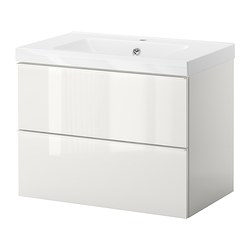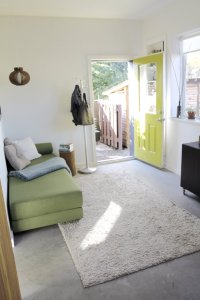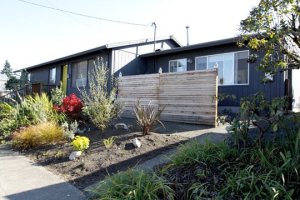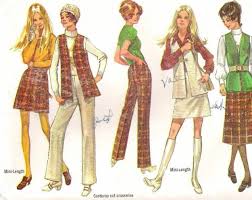When we decided to move to the east side DH lost his underground parking for his vintage auto. No problem during the summer when the car cozy he bought kept off the sun’s destructive rays and a few brief showers. But he knew he had to get it back underground for the winter and he rented a space for it a short distance away by bus and sky train.
Plus he got out his long-neglected bike, got it all serviced up, bought a helmet (after much nagging from his loving wife) and started using it for errands and exercise. It’s good for him and good for the environment.
So why am I not thrilled?
Because Vancouver is not a bike-loving city. Not yet anyway.
Watch this short film on biking through the streets of Amsterdam.
Bicycle Anecdotes from Amsterdam from Streetfilms on Vimeo.
See how the automobile traffic and the bike traffic work together to get everyone around? Did you see the tram stop to let the cyclists cross the road?
Now contrast that with this report from a local cyclist,
In the last six months I’ve been run off the road several times, sworn at, squeezed by buses, been flipped the bird, hospitalized once, and deliberately threatened by drivers too many times to count.
The author, Michael McCarthy, is clear that the most danger to cyclists comes from drivers who give in to their frustrations with acts of road rage. But it’s also clear that we are not yet the cycling-loving city we want to become.
In Groningen in the Netherlands there has been a cycling revolution. Between 50 and 60 percent of all trips in the downtown area are by bicycle. But as one of the commentators says,
“You’re not going to get a cycle revolution by having a few 30-kilometer an hour streets, you’re not going to get it by building just a few cycle paths and you’re not going to get it by traffic calming in just a few streets, either. You have to do everything and you have to do it everywhere. You never have to ride more than a few hundred meters from your home in the Netherlands in order to find yourself on a facility of such quality that you’ll be happy to cycle on it and you’ll be happy for your children to cycle on it.”
Groningen is a remarkably compact city even by European standards, originally it was a fortress within walls and it never expanded beyond about 100,000 people, many of whom are students. Its downtown core was stripped of car traffic simply by building a ring road around the central area and demanding that cars use that instead of cutting across town.
I don’t see that happening here. Also, Amsterdam and Groningen are, like all of the Netherlands, flat. Flat like tables. Flat like nothing we see in our town. Those healthy cyclists riding perfectly upright on their bikes don’t have to strain to make it up Vancouver hills, let alone North Vancouver mountains.
And although I know it rains and snows in the Netherlands, riding your bike a few kilometers in a light drizzle is one thing, but trying to keep your bike on its designated path in a gale is another. Bikes grow much scarcer on Vancouver streets in the rainy season.
What should we do to increase the cyclability of our town? Because we should increase it. The automobile is going to become more and more of a luxury — more expensive to run, to keep, to buy. Gas is never going to be much cheaper and it could be much more expensive. Transit must be increased of course, but let’s use all our options in making our city more accessible without cars.
In Michael McCarthy’s story, he and his fellow cyclists are reporting road rage incidents to the police. And so they should. They are also sharing information with cyclists throughout North America, especially towns like ours — Seattle, San Francisco, Portland. They are working together to find solutions.
In the meantime, be kind to the cyclists you meet today. You could become one in a year or two!
0.000000
0.000000


















